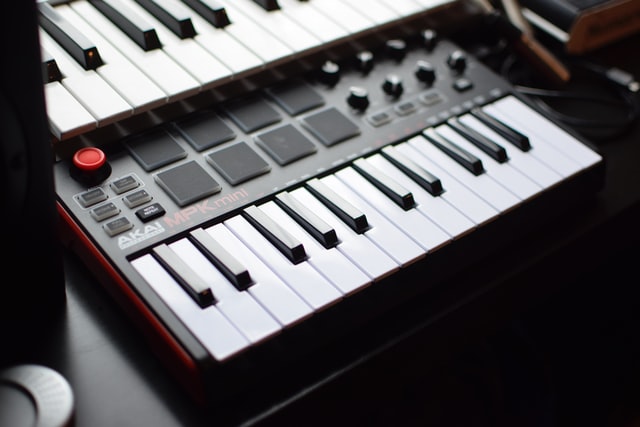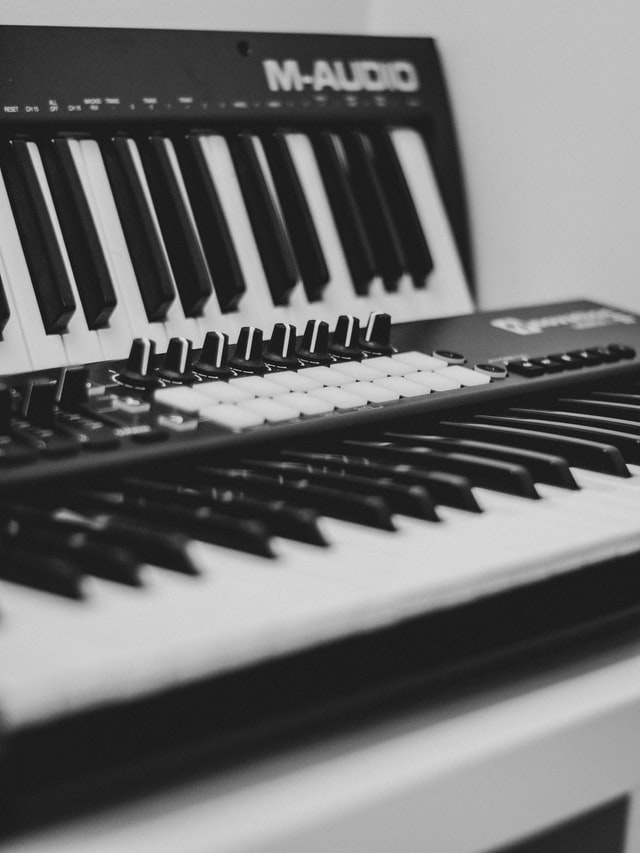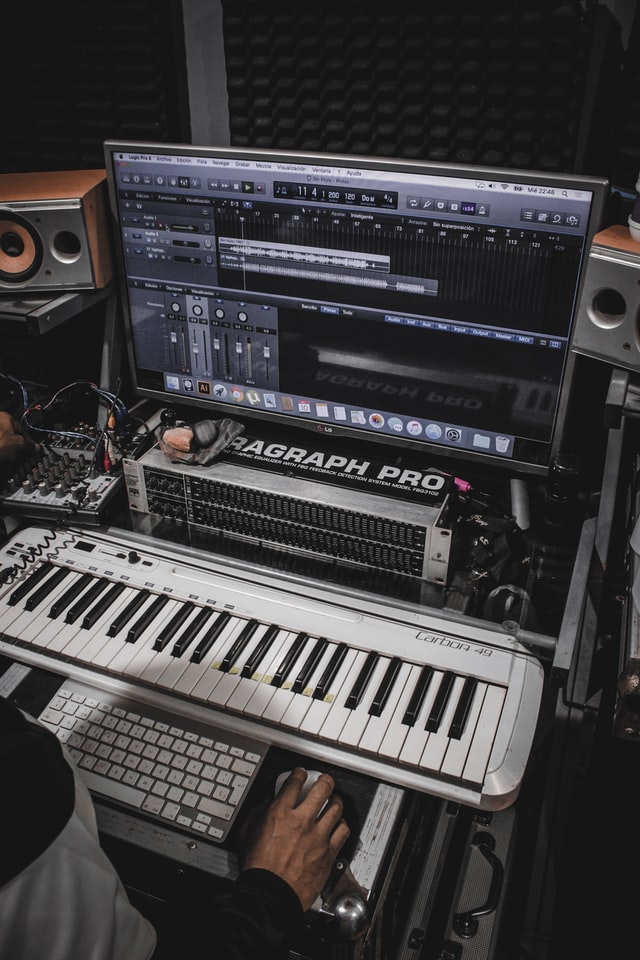Choosing a keyboard to learn piano. How do you choose the right keyboard to learn how to play the piano, is a keyboard even a suitable instrument for those who are looking to play the piano, as a first step?
The good news is that aspiring piano players can absolutely start their journey by playing a keyboard, and this is how a lot of people get started. It’s definitely much cheaper and easier than having to buy a piano, and more portable, too. It is at least a very good option for people who are not yet sure what they want from playing the piano, and if they are going to stick with it. You don’t want to buy a $5,000 grand piano if you will give up in a week.
There are certain features and functions to look out for when it comes to keyboards if you are looking to find something to learn how to play on. In this guide, we’re looking to demystify choosing a keyboard. What are the most vital features and functions to look for? What do all the features of a keyboard mean? We’ve got the FAQ’s covered.
Digital Piano vs Acoustic Piano vs Keyboard
This is one of the vital early concepts that you will need to get your head around. What is the difference between these three? All of them can be used to learn how to play the piano, but they all have different features and functions which could be more desirable.
Acoustic pianos. Obviously, these are the first pianos that were invented. They generate sound acoustically and don’t rely on any sort of electricity supply. These were the pianos most of the famous historical composers and performers will have used.
Digital pianos. These are designed to replicate the feel of an acoustic piano as closely as possible. They are pretty popular among people who know they want to become classically trained musicians in the future. There are some key differences between digital piano and keyboard. Truthfully, they are a more accurate reproduction of an acoustic piano, but they also cost a lot of money compared to keyboards.
Keyboards are a good starting point for many people. They are often lightweight and affordable, and though the keys don’t have the same realistic feel as an acoustic piano. They aren’t really designed to. Though they play the same notes, and they are modeled on the same musical concepts, learning on a keyboard can be hard if you don’t choose the right model.
Are Keyboards Suitable for Playing Piano?
This is a vital question to ask. If you are looking to learn how to play the piano, but simply can’t afford one, or can’t fit one in your home, it is really important that you consider what a keyboard can and can’t do. If you want a truly realistic experience then you will struggle with a keyboard, but some are getting a lot better at replicating the feel of a piano.
If you’re used to playing an acoustic piano and you are going to get a keyboard to practice at home then sadly it will not prove to be a similar experience. However, it is a good way to remember how to play notes, chords, and melodies.
Keyboards are best for beginners. If you don’t have the comparison of playing a digital piano or an acoustic piano, you will not find it so frustrating to make a start on a keyboard that doesn’t have the same features as a digital or acoustic piano.
Keyboards are a fantastic starting point. For children who want to learn to play, they’re recommended by a lot of piano teachers and tutors.
If you do eventually switch from keyboard to an acoustic piano or a digital piano, there will be some changes to get used to. That doesn’t mean that they are two totally different instruments. Think of it as a switch from classical guitar to acoustic guitar, they feel different, and are played very slightly differently, but the notes and chords are the same. Learning how to play the piano on a keyboard is still a viable option.
The Key Differences
When choosing a keyboard, there will almost always be a level of compromise, and a couple of differences to get used to, compared to acoustic and digital pianos.
- The sound. There will be some sounds on a keyboard modeled on an acoustic piano, but the sound engines don’t tend to be as detailed, meaning that the audio projection does not tend to be quite as good as digital pianos, and certainly don’t sound comparable to acoustic pianos. This doesn’t mean they can’t sound good, though.
- The keys. Weighted keys are a vital difference. This guide on weighted keys explains how they feel to the touch. Acoustic pianos all have some form of weighted keys, digital pianos replicate this, and choosing a keyboard for learning piano should mean choosing one that at least feels a little bit like the hammer action of an acoustic piano.
Choosing a Keyboard – The Key Considerations
So, what are the main things to consider when it is tile to choose a keyboard to learn how to play the piano? Below, we discuss some important features and things to think about before making the purchase.
How Do You Plan to Learn?
Before you make your choice, you need to think about the system you will be using to learn how to play the piano. Do you want to find a keyboard that can actually help to teach you to play? Some feature learning modes, and you can even get lighted keys that can show you how to play.
Our online piano learning system, the Pianu Academy, can link with a USB-MIDI enabled digital piano or keyboard. This allows you to see whether you are playing the right notes or not. You can simply and easily play songs that you actually want to play, rather than a select few songs built into your keyboard.
Choosing a Keyboard Size (Number of Keys)
This is a vital consideration, the size of the keyboard. Once again, if you want to become a pianist, and switch to playing the piano at some point in the future, then it is important to think about the size, based on the number of keys.
For a realistic piano feeling, you will want to find full-sized keys. Most keyboards ordinarily have a single octave span of 164–165 mm. The black keys work out at roughly 13.7 mm and white keys are around 23.5 mm in size. As this forum discussion shows, there isn’t a completely standardized size.
The number of keys can be the main consideration. Whereas a piano has 88 keys as standard, many of the keyboards on the market are 61-keys in size. This simply means they have fewer octaves. If you are looking to learn how to play classical compositions, it is really important that you have a large keyboard. Otherwise, you won’t have the range you need.
For most people, learning to play with two hands is sufficient. This means that your left hand can be playing chords or bass, while the right-hand plays a melody. 61-keys is enough for this, and for some pop and rock songs, 49-keys can even be a good option for some simple songs, but it is a bit of a squeeze, this is only just over half of the size of a full-size digital piano.
There is a personal decision to be made on the range that you will need, but the more complex songs you want to learn, the more range you will likely need.
MIDI and USB Capabilities
Music has changed in recent years. Whereas 10 years ago, amazing music software was reserved for the best computers and even recording studios, now, most of us can run a good DAW on our laptop. This means that if you are choosing a keyboard you might want to consider whether it can control your music software.
We’ve already mentioned the fact that USB-MIDI can make your keyboard work with our online piano for teaching you certain songs. So, you don’t even necessarily need software to get some extra functionality out of your piano.
If you just want a portable model that can be used to practice and you don’t mind whether or not you can control software then you might not care about the connectivity it has. However, if you are a budding producer as well, you might want to think about choosing a piano to suit your future ambitions.
You might see something called a MIDI keyboard. It’s important to establish exactly what this is. A MIDI keyboard, rather than a keyboard with USB-MIDI connectivity, will require something to drive the sound. It is just a controller for your DAW, rather than being a keyboard that generates sound by itself.
Weighted or Touch Sensitive Keys
This is a feature that is usually reserved for digital pianos. A keyboard is not likely to be weighted or have a hammer action. As we’ve discussed, this is one of the ways that keyboards can fall a little bit short in terms of their comparison to digital pianos and acoustic pianos.
You don’t necessarily need weighted keys. These can definitely make your keyboard a lot more expensive. If you are looking for a similar experience, some of the keys are touch-sensitive on many of the best keyboard options. Choosing a keyboard with touch-sensitive functionality means that you can introduce dynamics to your playing, and you can play louder and quieter sections in a similar way to playing an acoustic piano.
Some cheap keyboards are not sensitive to how hard they are being pressed. This means that the note is either playing or not playing, with no in-between volumes. Fully weighted keys are rare to find with keyboards, especially smaller ones.
Sounds
It sounds obvious, but when you are choosing a keyboard to learn piano then it is vital that you think about the sounds.
First and foremost, some decent piano sounds can go a long way to simulating the experience of playing the piano. It just doesn’t feel right if you are getting a cheap, toy piano sound out of the keyboard.
One of the benefits of choosing a keyboard vs choosing other types of digital or acoustic pianos is the fact that they usually include a lot more sounds. Sometimes they are slightly lower quality, but they still offer more options for aspiring players and give you plenty of sounds to experiment with. As well as keyboard and piano sounds, you might get organs, strings, synth sounds and even fun sounds like percussion.
Think about how important this is to you when choosing a keyboard. If you want to be able to play loads and loads of different sounds then you should choose a keyboard that allows exactly this, and they aren’t hard to find.
Headphone Outputs
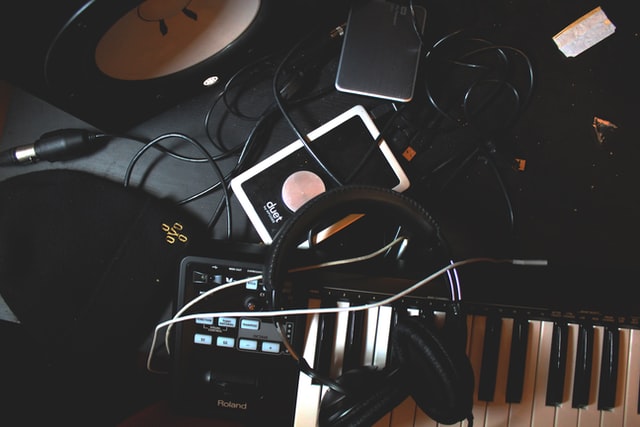
- Some people are anxious about others hearing their practice. This is pretty normal, it can be embarrassing when you keep getting something wrong.
- You might not want to disturb others in the room or wake the kids up. If you are practicing at an unsociable hour, headphones are a good idea.
- The sound might be better. If you have a great pair of headphones you might want to get the most out of them!
Choosing a keyboard with at least one headphone output isn’t hard as this is pretty standard tech to be included in most keyboard options. Some will have 1/4 inch outputs whereas others have 1/8 inch outputs. You can buy a 1/4 to 1/8 inch jack adapter (or vice versa) as this will allow you to use your headphones with the output.
Portability
This is probably the biggest advantage that keyboards can provide compared to the other options. They can be portable, allowing you to take them wherever you want, and practice in a variety of different locations. They are also easy to take to band practices or to gigs, and you can put them in a case like you would with a guitar.
Naturally, some models are more portable than others. If you are happy with a simple interface then you might be able to find a digital piano that is exceptionally portable. You can even get something that weighs around 10lb if you are determined that portability is the number one feature for you.
Something that further adds to the portability is the fact that you can use a folding stand, such as an X-style stand. The video below shows what these stands look like, and just how flexible they can be, too.
Choosing a keyboard that is portable is not difficult to do, as most are designed with some level of portability in mind. However, there are some models designed to be specifically portable. Did you know that Casio manufactures a keyboard that even has a handle built-in? The Casio CT S100 Portable Keyboard could be a good option for portability.
The truth is that there are a lot of choices, and you can decide when choosing a keyboard how much of a priority this will be.
Power Supply
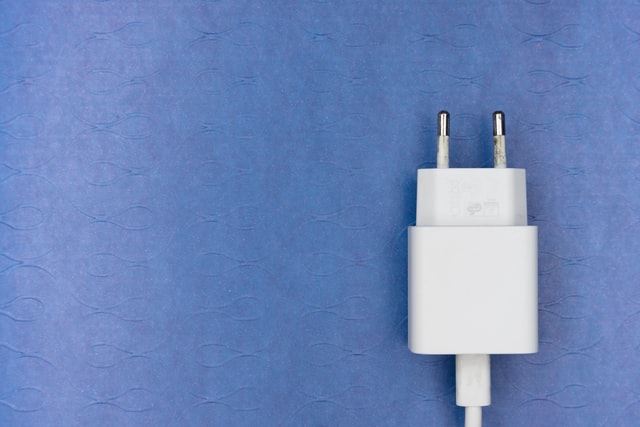
Brand
Some people are very brand-loyal when it comes to musical equipment. In terms of the brands that manufacture the biggest, most-popular ranges, Yamaha and Casio definitely come out on top, with a huge amount of options. Both also create acoustic and digital pianos, so you can choose one of these if you decide a keyboard isn’t going to cut it.
As with most electronics, you can save a significant amount of money if you aren’t too worried about which brand you are going to opt for. Some budget brands out there actually provide some very good keyboards, especially for beginners. If you are buying a keyboard for your child and you aren’t certain whether or not they will stick to the habit, it is sensible to keep your spending to a minimum, at least until you decide whether to take the piano further.
Learning App Support
Many manufacturers link with some form of application in order to provide song lessons. This isn’t necessarily the most vital feature, but it can be an added extra that can be a bit of a bonus. These apps can sometimes use the display of the keyboard to show the notes that you need to play or even display the sheet music.
Yamaha and Casio have their own apps and systems that might be helpful. For example, the Yamaha Education Suite. In fact, this has been around for a long time! But it is worth considering using as they continue to update the features.
Some systems such as the Pianu online piano natively work with a keyboard through the MIDI functionality to provide simple lessons and get you playing the basics in a very short space of time.
Choosing a Keyboard Bundle
For a keyboard manufacturer, a bundle is a good way to make their offering stand out and increase their customers. For a customer, it is a way to get better value.
A lot of keyboards are sold as bundles, and sometimes, you can even choose the contents of the bundle. You might receive items such as learning materials, free access to courses, headphones, stands, stools, and more. If you want to buy this stuff separately anyway then it makes sense to at least think about the keyboard you are buying and consider whether this can be a chance to save some money.
Other Tech Features
A lot of keyboards are starting to develop even more tech features that they can offer to their customers, making more exciting ways to play. Some of these tech features are listed below. Check individual models to see exactly what they offer.
- Recording and playback. This can allow you to record your playing and then listen back, or even export the audio and use it for music production, or to send to bandmates. You can even just check if you are playing something correctly.
- Aux inputs. This is not state-of-the-art technology, but not all keyboards offer it. Choosing a keyboard with aux inputs means you can play along to songs through a device you connect to your keyboard.
- Bluetooth. Bluetooth isn’t as popular for some audio hardware as it is in other areas of tech, but there are keyboards with Bluetooth features starting to crop up.
- Sequencers. These allow you to arrange and sequence songs with multiple parts and multiple instruments, all within the keyboard. Expect to pay more for this technology.
- Effects. Some keyboards include inbuilt effects, these can allow you to add reverbs, delays, chorus and other effects and give you more control of the overall sound. They are also very fun to play around with and keep people interested in playing the keyboard.
It is up to you which of the features you are looking for. Obviously, the more you want included, the more you are likely to pay for your keyboard. Modern tech features do tend to come with an extra price, and you will be more likely to get these features from elite brands.
Buying New or Second-Hand
A lot of people looking to buy a keyboard start with a second-hand model. There is nothing wrong with buying second-hand instruments but you should be aware that you probably won’t get the same protection or a warranty, which you can find when choosing a keyboard that is brand new.
Getting a second-hand model from an approved music store means you might get a store warranty to protect you if anything goes wrong. All electronic products have some risk of going wrong at some point.
Summary – Choosing a Keyboard for Your Needs
Choosing any instrument is a personal decision. Our guide to choosing a keyboard should help you to understand the different features, and which keyboards might be the best options if you want to learn how to play the piano, but the final decision when choosing a keyboard needs to be yours.
Consider which of the features you will prioritize, and match up a keyboard to your needs. Do you need weighted keys? Do you want something lightweight and portable? Do you want to listen through headphones? Finding the right keyboard is the first step. Combine this with the perfect piano or keyboard course or online lessons and you will be well on your way to becoming a talented musician.
